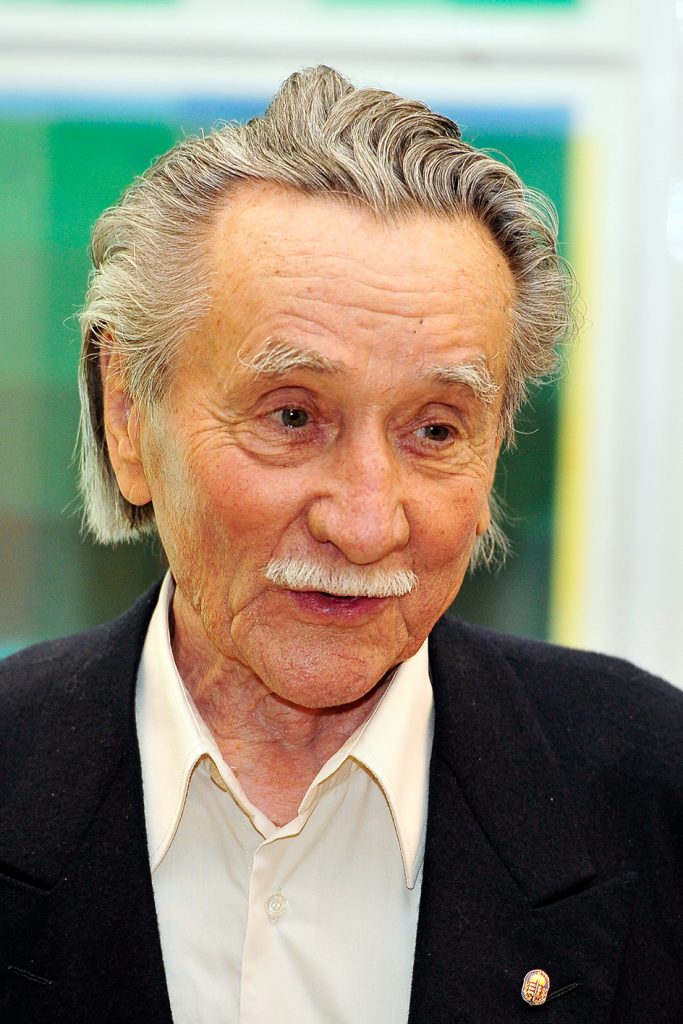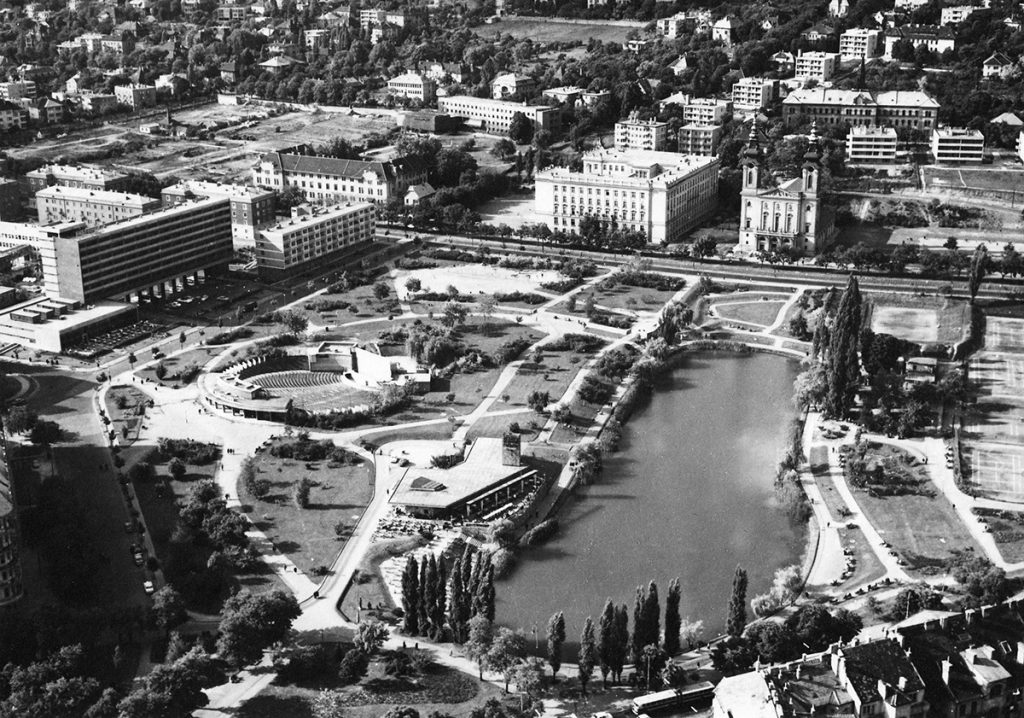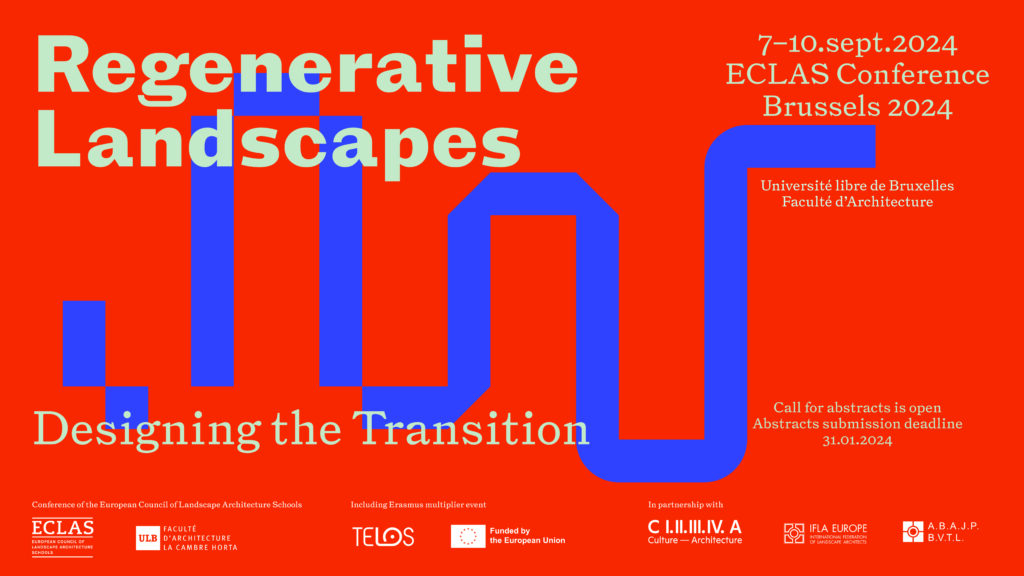by Kinga Szilágyi
“Be the change that you wish to see in the world.”
Mahatma Gandhi
We received the hardly credible news in September: Mihály Mőcsényi, the PROF had passed away. Two months before he would turn 98 years old, he died. He started his last journey with a clear mind, the satisfaction to know he got the job done, his family around him, in the peaceful Mőcsényi-garden built by himself in Balatongyörök. On behalf of the editorial office of 4D, its authors and readers, we say farewell to the Professor now with respect and love.

Mihály Mőcsényi was a veritable polyhistor, maybe one of the lasts. A well-known and renowned science professor at home and abroad, he was instrumental in the development of landscape architecture and the Hungarian landscape architecture institute for 75 years. He was able to think ahead and would act accordingly, despite the many obstacles he had to deal with. Time always validated his moves. A major stage of his perseverance was when, in 1992, as reactivated professor and rector of the University of Horticulture, he initiated and achieved the formation of an independent Faculty of Landscape Architecture. To the end, he was loyal both to the school he inherited from Rerrich and Ormos and to its maintenance and development, for which he would leave no stone unturned.
It is indisputable that the formation of the faculty was a step of crucial importance from the point of view of the domestic development of the profession of landscape architecture. Professor Imre Jámbor – in his valediction he gave in the cemetery of Balatongyörök on the 3rd of October – mentioned the formation of the faculty as Mőcsényi’s most beautiful creation (“I know you see us from up there, keep an eye on and take care of this little, but so important university faculty, your most beautiful creation.”) Mihály Mőcsényi believed in it with conviction that landscape architecture is the basic instrument and facility of human environment and landscape shaping. The great number of professional tasks, the successful work of domestic and foreign landscape architects graduated here also validated him.
His life journey was hallmarked by the continuous undertaking of more and more challenges, constant learning and development embracing a broad range of disciplines. A rich repository of his colourful and wide-ranging professional activity as well as of his creative work, his achievements in national and international professional politics and of thought-provoking interdisciplinary methods can be witnessed in his academic doctoral dissertation (Mihály Mőcsényi, My work in landscape architecture, 1993, Hungarian Academy of Sciences). Rather than being disturbed by debate, Mőcsényi enjoyed it, lived it, often debating with himself, seeking solutions from ever-changing perspectives. His work is undoubtedly a source of support, a basis for further studies for many.
We presented him with the first, freshly printed copy of the 4D, Journal of Landscape Architecture and Garden Art in the spring of 2006. He was pleased to get it and was glad that the faculty and the profession finally had a respectable, meaningful and well-designed publication, articulating contemporary principles. He liked the name, 4D, its concision and snappiness. In the next issue, he reacted to the launch of the journal in his unique way: “There is no third without a fourth” (4D. 2006, issue 2. pp.38-39).
Gardens, “the third dimension of the living artwork, the space and the system of spaces evolve in the fourth, in the passing time, and only fulfillment and evolution can decide whether aesthetic values manifest within it or not.” As a good teacher he gave a task to the editorial board of 4D right away: let the journal be the forum of landscape architecture review and critics, because, if we take into account the creative genres, criticism circle and tradition had yet to be established only in this profession. Good criticism, in turn, is a prime element that is beneficial for both the designer and the audience.
Dear Professor, we understood the task, and although we have not launched a regular heading, a lot of designer and critical evaluations of contemporary works have been published. Critical culture is developing step-by-step, too. In relation to this, up-to-date communication is represented by the landscape architecture articles of Architects’ Forum, since a printed journal cannot produce the freshness of the digital world. However, by switching to publication in Hungarian and English, 4D became the forum of the faculty’s international relationship building.
The journal has often given space to Mőcsényi scripts or the significant milestones of his walk of life, the representation of creative and researcher, scientific work. In 2009 within issue 15 we presented the creative, designer works of the 90-year-old professor. Among others, the article on four public parks situated in the historical part of Wien, that’s renewal was requested to be realized by him. Roaming the gardens with the Professor, the article (Imre Jámbor: Gardens of Wien”. 4D 2009. issue 15. pp4-13.) was a good opportunity to evaluate the justness of the designer decisions that had been made for nearly one decade in light of practice, functional compliance, space structure, the development and character of the applied plants. According to the conclusion of the article, the parks have withstood the test of time. As one of his emblematic works, the park of the Feneketlen-tó in Buda is still authentic today, that, despite the minor reconstructions and functional expansions, well reflects the creator’s intention: clear space structure, good and manifold functional system, good background ratio, understanding and representing the Genius Loci for the users of the park, characteristic plant application and deep ecological thinking, and the infallible technical, artistic space-shaping surface formation. This complexity and creative selectiveness hallmarked the Mőcsényi landscape architecture and garden design.

Mőcsényi’s versatile landscape architecture work was built upon exceptionally colourful academic education and self-instruction. He started his studies at the Horticultural Academy in 1938, where professor Imre Ormos noticed the gifted student right away. Thanks to the tight “master-disciple” relationship he acquired well-set knowledge that he broadened and empowered with more and more academic studies. During his army service in Transylvania he realized that the people would really profit and truly prevail from our profession if it steps out of the function of open space design of gardens, parks and municipal public spaces, and opens up towards the regional, large scale landscape planning and urban landscape architecture. After the years spent on the Transylvanian and Moravian theatres of war – as before joining the forces Mőcsényi got the offer from Professor Ormos – he started to work as an assistant lecturer at the Department of Garden Art at the Horticultural Academy. Thanks to the support and encouragement of Imre Ormos he continued his studies according to plan at the Academy, building up the comprehensive scientific outlook and practical competence of landscape architecture step-by-step. His lifelong learning created that professional and scientific palette we know today as landscape architecture in its variegation and complexity.
The overwrought industrial development of socialist Hungary and the hard loss of housing stock due to the war provided a new opportunity to the then barely known profession. Development ruled by economic planning – that could not really fit into the domestic landscapes and the capabilities of the economic structure – eviscerated our landscapes. Knowing of the landscape changing processes and the necessary or subservient landscape architecture tasks, Mőcsényi initiated the subjects of landscape management and planning, landscape protection, regional development, spatial planning, environment protection to be integrated into the curriculum of landscape architecture. The housing construction program carried out with great momentum brought about a great number of municipal landscape architecture works, urban green system and open space plans and design for the profession. The scale and functional diversity of the tasks demanded the extension of the knowledge base. Mőcsényi saw this well and personally undertook the scientific, professional “roam”. The multiplicity of the studies undertaken by him could stand as an example for all of us, let it be self-instruction or the preparation to professional or inter-professional tasks.
The registration books, certificates of Mihály Mőcsényi confirm 36 academic – full, part or private student – semesters closed with the exams. The academic studies are listed below in chronologic order (according to Mőcsényi’s doctoral dissertations defended at the Hungarian Academy of Sciences and also the university archives):
- Horticultural School / Academy, 1939
- Imre Ormos’s special course in garden design offered for horticultural students, 1940 (the Hungarian Architects’ Chamber recognizes the Ormos course as the start of landscaping qualification)
- Cluj-Napoca, Faculty of Economics, economic studies during his army service, 1940
- Horticultural School / Academy – teacher assistant for garden design from 1945. During this time, he runs seminars at other universities as well; for example, at the Faculty of Architecture of the Budapest Technical University
- Péter Pázmány University, history of art major, from 1946
- Bern, Switzerland: scholarship and internship at Franz Vogel’s gardening company between 1947 and 1948
- Lóránd Eötvös University, museology major, from 1948
- Budapest Technical University, Faculty of Architecture, special student status for two years
- Urban planning and urban economics post-graduate university program, 1952-54
- Evening University, art specialization (aesthetics) for three years
- Doctoral dissertation (Scientific Qualification Committee), but was not allowed to defend it for political reasons, 1957
- College of Horticulture, doctoral degree, 1958
- Budapest Technical University, doctoral dissertation, doctor of technology 1968
During all these years he was an active teacher at the Department of Garden Art at the Horticultural Academy, and according to his possibilities, he broadened the knowledge base of landscape planning and garden design departments with the skills he acquired in the meantime. The landscape architecture departments finally – despite every political stricture and shackle – became an independent faculty in 1992.
He could defend his Academic Doctoral dissertation in 1993.
His role at the Grand Chamber of IFLA was a prominently important period for him in terms of professional politics. Being vice-chairman throughout two cycles and chairman starting from 1986, he was able to prepare and achieve that landscape architect in Hungary, as well as in the Eastern bloc over the Iron Curtain, could integrate to IFLA.
The organization established by the IFLA founders (headed by Sir Geoffrey Jellicoe) next to advocacy activity, served to patronize professional values, to develop and spread the theoretical, practical skills and international cooperation. Professor Ormos successfully nominated the Hungarian landscape architects into the IFLA in the 960’s (more precisely, the horticultural engineers, since at that time this professional title had not been accepted in Hungary yet). Mőcsényi, at the second place of the IFLA list, was practically the deputy. He could not attend the 1966 IFLA congress – although he was asked to give a presentation there – because he did not get the passport. The first time he represented Hungary was in 1970 at the XII. Congress in Lisbon. In 1984, already as vice-chairman, he successfully organized the Hungarian IFLA congress in Siófok, bringing significant recognition for the Hungarian profession and to the school. The Hungarian setting, at the same time, was a good opportunity for the participation of the socialist countries to join the IFLA work. The successful congress also contributed to electing Mőcsényi as IFLA chairman in 1986. It was a responsible, demanding title. The opening speech at the XXV. Congress in Boston in 1988 was given by Sir Geoffrey Jellicoe, the IFLA founder, who greeted the IFLA chairman in office: “…when I heard You were elected chairman, my heart beat with joy. Please, Sir, represent the IFLA spirit dormant over the iron curtain, we pray that this spirit, by giving life, may fulfill the hopes we composed 40 years ago in Cambridge.”
His work was acknowledged by numerous Hungarian and international awards and honours:
- Imre Ormos Medallion, 1968
- János Hild Award, 1986
- Sámuel Tessedik Award, 2000
- Széchenyi Award, 2000)
- József Eötvös Laurel Wreath, 2003
- Order of Merit the Hungarian Republic, middle cross (civilian), 2009
- IFLA Grand Prize, Sir Geoffrey Jellicoe Award of Excellence in Landscape Architecture, 2012
- Silver Corvina, 2012
- ECLAS Outstanding Life Award, 2012
- Margit Cziráky Award, 2013
- Kossuth Award, 2014
Professor Mőcsényi left as he lived, prepared, provident, wise. He was and remain the PROF. For us, landscape architects, he is the Master, the role model, in our profession, in school building and development, too. We have to keep and invigorate his memory with the professional belief and perseverance that he as a teacher, rector, mentor radiated towards us, students, colleagues, associates.
